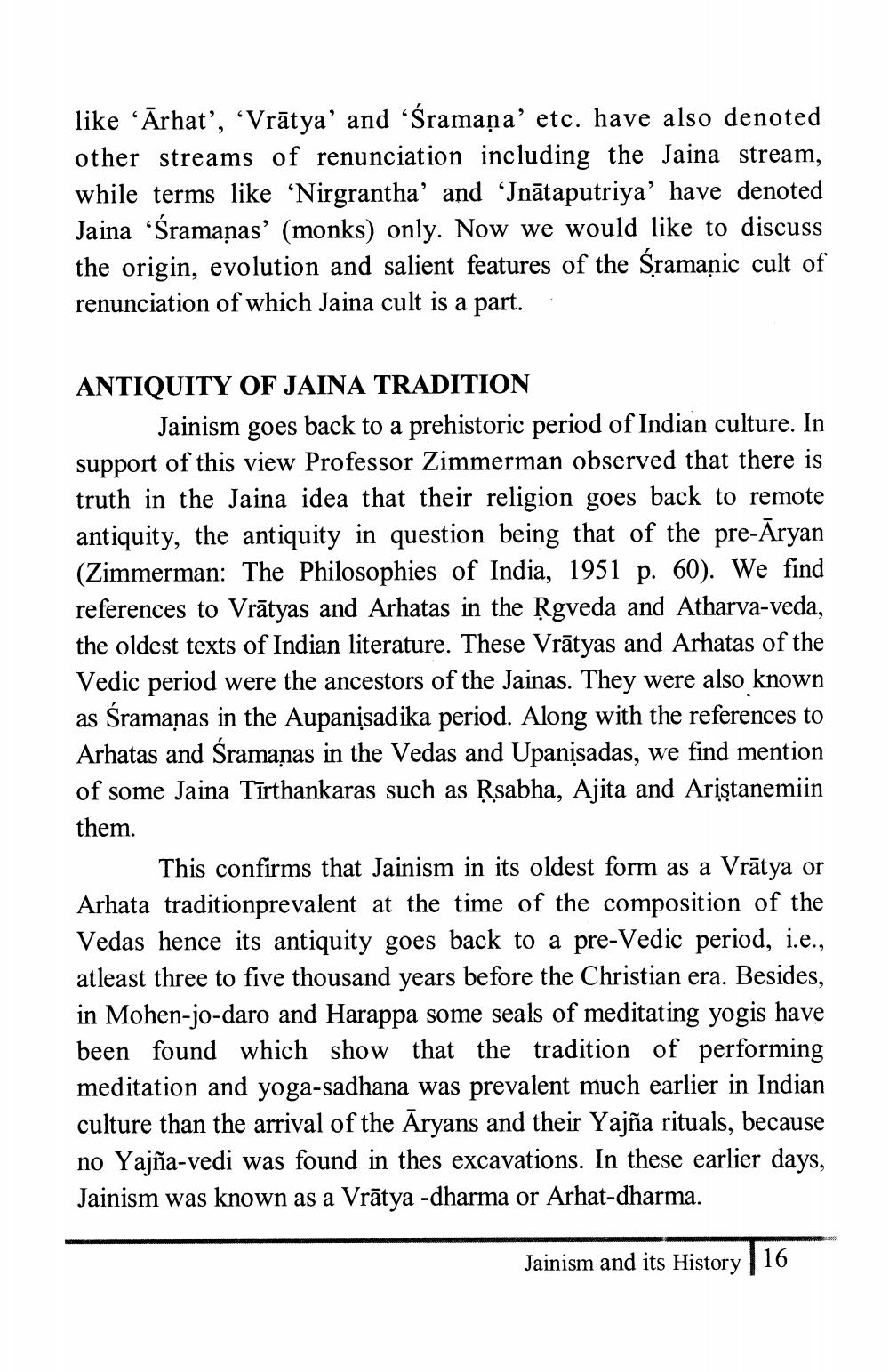________________
like “Ārhat’, ‘Vrātya' and 'Śramana' etc. have also denoted other streams of renunciation including the Jaina stream, while terms like 'Nirgrantha' and 'Jnātaputriya' have denoted Jaina 'Sramanas' (monks) only. Now we would like to discuss the origin, evolution and salient features of the Sramanic cult of renunciation of which Jaina cult is a part.
ANTIQUITY OF JAINA TRADITION
Jainism goes back to a prehistoric period of Indian culture. In support of this view Professor Zimmerman observed that there is truth in the Jaina idea that their religion goes back to remote antiquity, the antiquity in question being that of the pre-Aryan (Zimmerman: The Philosophies of India, 1951 p. 60). We find references to Vrātyas and Arhatas in the Rgveda and Atharva-veda, the oldest texts of Indian literature. These Vrātyas and Arhatas of the Vedic period were the ancestors of the Jainas. They were also known as Šramanas in the Aupan sadika period. Along with the references to Arhatas and sramanas in the Vedas and Upanisadas, we find mention of some Jaina Tīrthankaras such as Rsabha, Ajita and Aristanemiin them.
This confirms that Jainism in its oldest form as a Vrātya or Arhata traditionprevalent at the time of the composition of the Vedas hence its antiquity goes back to a pre-Vedic period, i.e., atleast three to five thousand years before the Christian era. Besides, in Mohen-jo-daro and Harappa some seals of meditating yogis have been found which show that the tradition of performing meditation and yoga-sadhana was prevalent much earlier in Indian culture than the arrival of the Aryans and their Yajña rituals, because no Yajña-vedi was found in thes excavations. In these earlier days, Jainism was known as a Vrātya -dharma or Arhat-dharma.
Jainism and its History | 16




